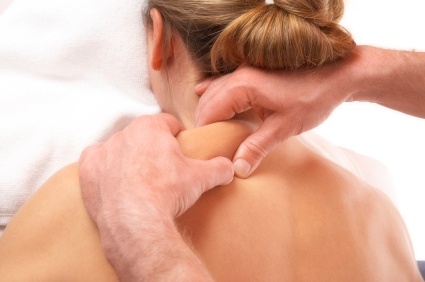|
Shoulder ImpingementWhat is shoulder impingement? You may have gone to your osteopath, phsyio or doctor because your shoulder was causing you pain, weakness, or you had lost mobility in it. Your doctor looks and the diagnosis is shoulder impingement syndrome. At this point, your first question is what is causing my pain and restricted mobility, and your second question how can I get it better? Basically you have a tendon in the shoulder which is pinched by overlying bone. The tendon involved is called the supraspinatus tendon, which one of four muscles known collectively as the rotator cuff. The bit of bone pinching the tendon is called the acromion. What causes impingement syndrome? Sometimes the acromion has a small hook downwards, which people are sometimes born with. We call this a type II or type III hooked acromion, depending on the protrusion of the hook. You can imagine it’s a little like a bone spur, except this spur has a tendency to press into the underlying tendon, hence impingement. Every time you lift your arm up to the side or you scratch your back, this hook presses into the supraspinatus tendon, and pinches causing pain. This shoulder impingement may also be caused by some arthritis under the acromion, including small bony nobules called osteophytes. There may also be some arthritis under the acromioclavicular joint (ACJ). These rogue pieces of bone are often a little rough, and they scratch the underlying rotator cuff tendon and pinch it, inflame it, and then you get pain. If this carries on long enough, you may end up with a calcified tendon, whereby the body is trying to protect the tendon due to all the scratching, rubbing and subsequent inflammation. Sometimes impingement can occur due to an inflamed bursa, or what we call shoulder bursitis. However, if you have been diagnosed with shoulder impingement syndrome there are a few ways to attempt to resolve it. Firstly you must rest. Then depending on the exact cause of your shoulder impingement, you can use anti-inflammatory drugs, physical therapy such as osteopathy or physio, and ice packs to reduce the inflammation. There are also a number of exercises that you can do in order to strengthen the muscles and return the range of mobility which might have been lost. In rare cases, steroid injections (often limited use) or arthroscopic surgery may be necessary. If you want to know if you are at risk people who participate in activities that require overhead movements like swimming, golf, tennis, pitching, overhead lifting, or people with rheumatoid arthritis can be at risk for this syndrome. It is a good idea to go to your doctor, osteopath or physio as soon as you notice difficulty reaching behind your back, pain using your arm in an over the head position or weakness. Leaving this problem without treatment can result in a muscle tear. A muscle tear in the rotator cuff can make it difficult to even lift the arm. To be sure, your doctor may order an X-ray or refer you to a specialist for an MRI scan. To understand exactly what is happening in your shoulder knowing exactly how the shoulder is set up can help, and getting to grips with the anatomy will help a lot. 
acromion
|




